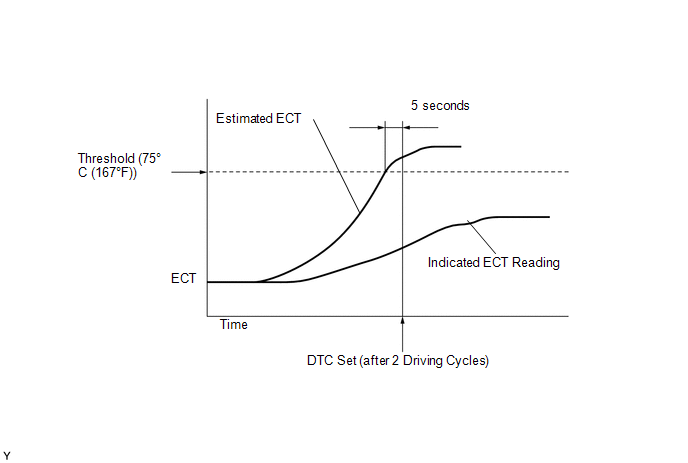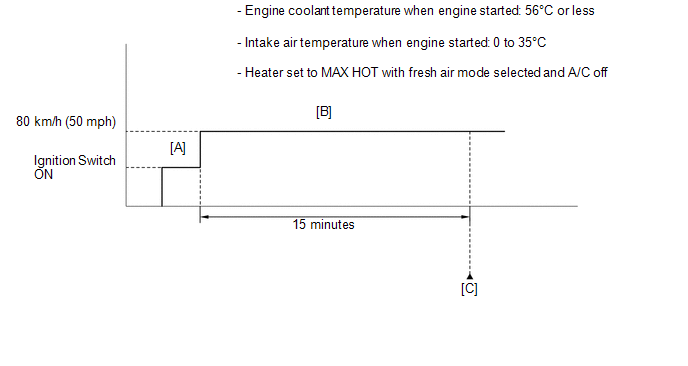DESCRIPTION This DTC is stored when the Engine Coolant Temperature (ECT) does not reach 75°C (167°F) despite sufficient engine warm-up time having elapsed.
MONITOR DESCRIPTION  The ECM estimates the ECT based on the starting temperature, engine loads, and engine speeds. The ECM then compares the estimated temperature with the actual ECT. When the estimated ECT reaches 75°C (167°F), the ECM checks the actual ECT. If the actual ECT is less than 75°C (167°F), the ECM interprets this as a malfunction in the thermostat or the engine cooling system and stores the DTC. MONITOR STRATEGY
TYPICAL ENABLING CONDITIONS
TYPICAL MALFUNCTION THRESHOLDS
CONFIRMATION DRIVING PATTERN 
CAUTION / NOTICE / HINT HINT:
PROCEDURE
(a) Connect the Techstream to the DLC3. (b) Turn the ignition switch to ON. (c) Turn the Techstream on. (d) Enter the following menus: Powertrain / Engine and ECT / Trouble Codes. (e) Read DTCs. Result
HINT: If any DTCs other than P0128 are output, troubleshoot those DTCs first.
(a) Check for defects in the cooling system that might cause the system to be too cold, such as abnormal radiator fan operation or any modifications.
(a) Remove the water inlet with thermostat sub-assembly (See page
(b) Measure the valve opening temperature of the thermostat. Standard opening temperature: 80 to 84°C (176 to 183°F) HINT: In addition to the above check, confirm that the valve is completely closed when the temperature is below the standard.
(a) Inspect the engine coolant temperature sensor (See page
|
Toyota Tundra Service Manual > Can Communication System: Combination Meter ECU Communication Stop Mode
DESCRIPTION Detection Item Symptom Trouble Area Combination Meter ECU Communication Stop Mode Any of the following conditions are met: Communication stop for "Combination Meter" is indicated on the "Communication Bus Check" screen of the Techstream. Communication system DTCs (DTCs that start with U) ...